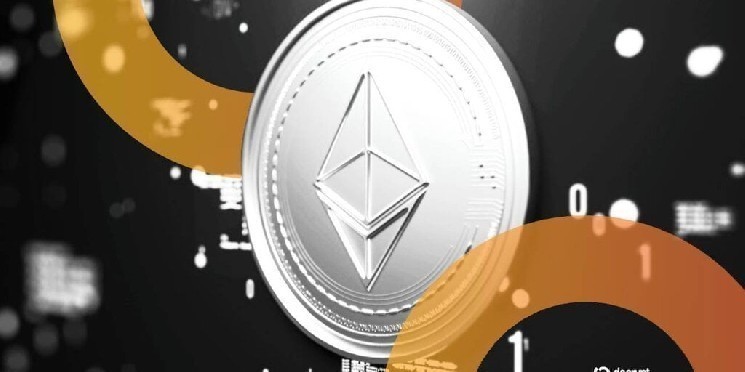Ethereum Whales Signal Potential Market Reversal with Strategic Accumulation
Large Investors Capitalize on Discounted Ethereum Prices Amid Market Volatility
In a significant shift that has caught the attention of market analysts, Ethereum’s spot order activity indicates that large-scale investors—often referred to as “whales”—are strategically accumulating the second-largest cryptocurrency at what they perceive to be discounted prices. This behavioral pattern, historically associated with potential trend reversals in the crypto market, could signal an important inflection point for Ethereum’s price trajectory as we approach the year’s end.
According to comprehensive data from CryptoQuant, wallets holding between 10,000 and 100,000 ETH have increased their balances by an impressive 7.6 million tokens since late April—representing a substantial 52% increase in their holdings. This significant accumulation stands in stark contrast to the behavior of retail investors, as wallets containing 100 to 1,000 ETH have reduced their positions by approximately 16% during the same period. This divergence between large and small investors creates a narrative of wealth transfer and strategic positioning within the Ethereum ecosystem that could have long-term implications for the asset’s price discovery.
“The likelihood of whale accumulation forming a local bottom remains high,” explains Shawn Young, chief analyst of MEXC Research, in an exclusive interview. “This cycle looks similar to previous bottoms, marked by large wallets absorbing sell-side liquidity from short-term holders.” Young further emphasized that the stability of the ETH/BTC ratio at multi-month lows should be interpreted as a sign of relative strength—particularly when considered alongside the 25% increase in daily transactions since September and the normalization of staked Ethereum discount following the substantial $19 billion market correction on October 10.
Macroeconomic Factors and Institutional Re-entry Support Bullish Outlook
The accumulation pattern observed in Ethereum isn’t occurring in isolation but reflects broader market dynamics influenced by an improving macroeconomic landscape. The potential resolution of one of the United States’ longest-running government shutdowns has injected cautious optimism into financial markets, including the cryptocurrency sector. This positive sentiment has created favorable conditions for institutional investors to reconsider their positions in digital assets, particularly those with strong fundamentals and technological advancements like Ethereum.
Lai Yuen, an investment analyst at Fisher8 Capital, offers additional context: “Whale accumulation makes sense, and we see the same for Bitcoin as well, with new participants coming in to absorb sell pressure from OGs that believe in a four-year cycle. If macro conditions continue to hold up well…chances of this becoming a local bottom are high for Ethereum at $3,200 and Bitcoin at $98,000.” Yuen also highlighted the persistent enthusiasm from traditional finance regarding asset tokenization—a domain where Ethereum maintains a dominant position. A supportive regulatory environment could provide further catalyst for price appreciation, as greater clarity would potentially remove the regulatory overhang that has kept many institutional investors on the sidelines. However, these positive regulatory developments remain contingent on the resolution of the government shutdown, which would allow bipartisan discussions to resume before year’s end.
Fusaka Upgrade: Technical Advancement Fueling Institutional Interest
The institutional re-entry narrative gains additional support from Ethereum’s forthcoming Fusaka upgrade, scheduled for mainnet activation on December 3. This highly anticipated technical enhancement promises to significantly boost the network’s scalability and reduce transaction costs—two critical factors for widespread adoption and institutional implementation.
The upgrade will introduce dedicated data lanes for rollups, allowing Layer 2 protocols to scale more efficiently while simultaneously reducing congestion on the main chain. “This is a significant update because what’s next for Ethereum adoption is coming from real-world applications and DeFi protocols, all of which would depend on cheaper, faster transactions,” explains MEXC’s Young, underscoring the practical implications of these technical improvements. Additionally, Fusaka will implement Peer Data Availability Sampling, enabling nodes to share smaller data pieces rather than complete blocks. This innovation reduces bandwidth and hardware requirements, potentially expanding network participation and enhancing decentralization—a feature that aligns with institutional preferences for robust network security.
Balancing Technical Improvements with Economic Considerations
While the Fusaka upgrade presents numerous advantages for Ethereum’s ecosystem, analysts have identified potential trade-offs that merit consideration. Specifically, the introduction of blob lanes and improved blob fees will make it more cost-effective for Layer 2 protocols to build on Ethereum—a positive development for the network’s utility but one that could have implications for its tokenomics.
“This could lead to a decline in fees, thus reducing Ethereum burn,” notes Yuen, highlighting the delicate balance between network usability and token value preservation. This consideration is particularly relevant in the context of Ethereum’s monetary policy since the implementation of EIP-1559, which introduced a fee-burning mechanism designed to create deflationary pressure under high network usage. The potential reduction in burn rate could influence long-term supply dynamics, though many analysts believe this would be offset by increased adoption and utility resulting from lower transaction costs.
Despite these considerations, market sentiment remains cautiously optimistic. If the current accumulation behaviors persist and the $3,000 to $3,400 price range continues to function as effective support, analysts anticipate that Ethereum could enter a consolidation phase—potentially setting the stage for significant upside movement. This perspective is tempered by current market realities, with Ethereum trading at approximately $3,560, reflecting a modest 1.6% decline over 24 hours according to the latest data from CoinGecko.
Conclusion: Strategic Positioning Amid Market Uncertainty
The crypto market landscape continues to evolve as large investors strategically position themselves during this period of price discovery. The divergent behaviors between whale accounts and retail investors create a fascinating dynamic that often precedes significant market movements. Multiple instances of higher-than-average spot volumes for executed trades were observed following Ethereum’s drop to $3,000 in early November—a pattern that CryptoQuant verified analyst ShayanMarkets suggests typically “marks the start of trend reversals or late-stage compression phases before major upswings.”
As Ethereum approaches its important technical upgrade and macroeconomic conditions continue to develop, market participants remain attentive to these whale accumulation patterns. History has demonstrated that such behaviors from large-scale investors can provide valuable insights into potential future price trajectories. With institutional interest rekindling and technological advancements on the horizon, Ethereum’s current positioning at the intersection of technological innovation and strategic investment accumulation creates a compelling narrative for market observers and participants alike.
For investors navigating this complex landscape, the balance of technical factors, macroeconomic influences, and large-holder behaviors offers a multifaceted framework for assessment. While uncertainty remains an inherent aspect of cryptocurrency markets, the confluence of whale accumulation, technical advancement, and potential regulatory clarity presents a nuanced perspective on Ethereum’s medium-term outlook as the digital asset ecosystem continues its maturation process.















